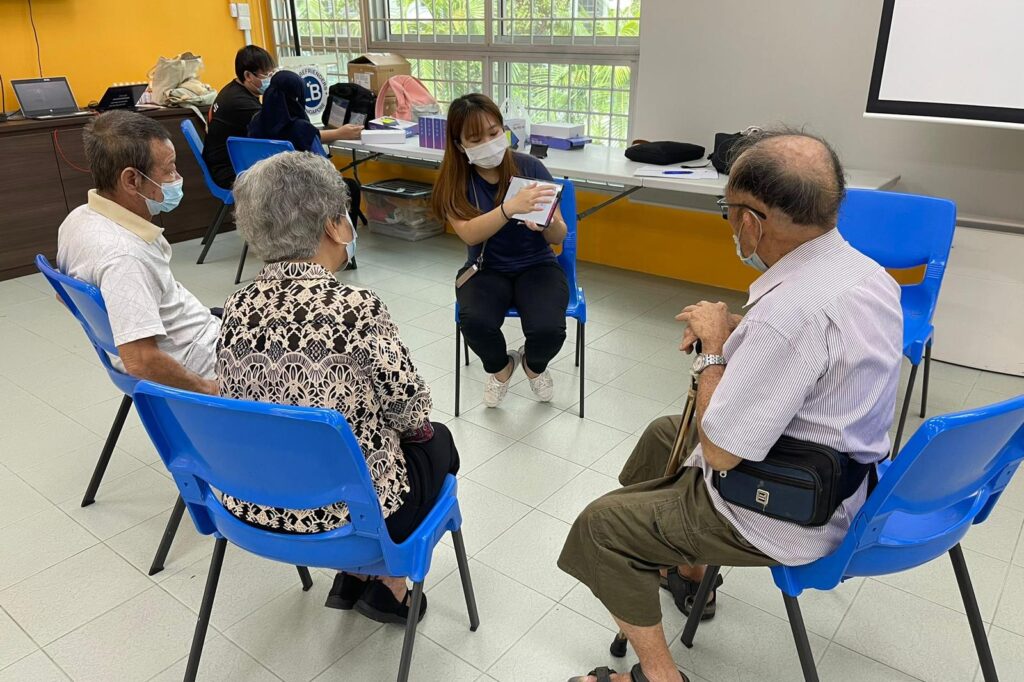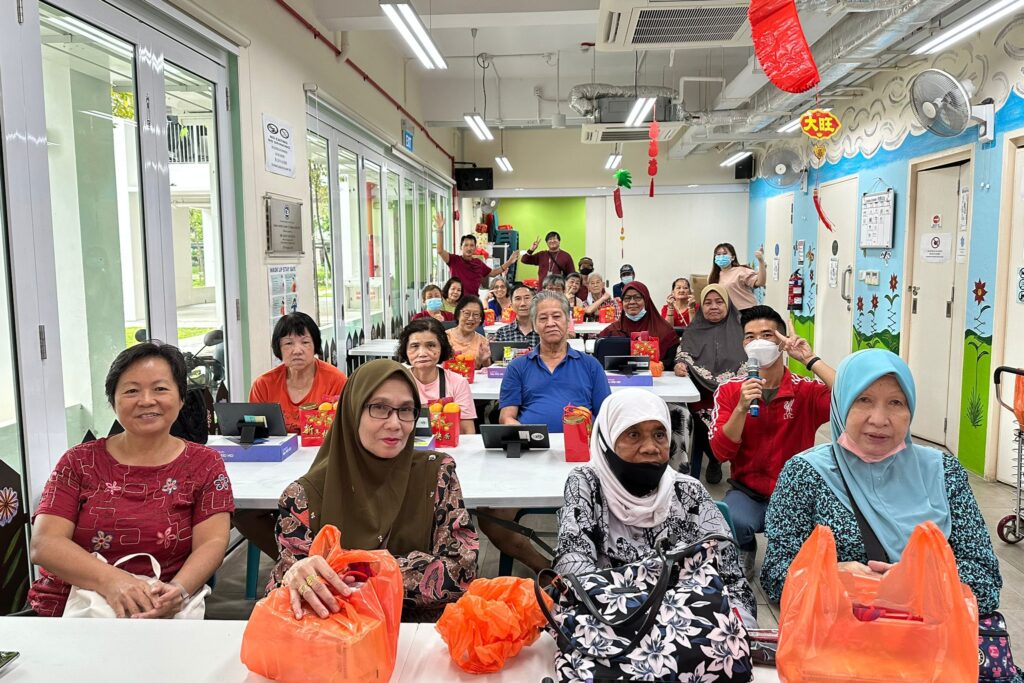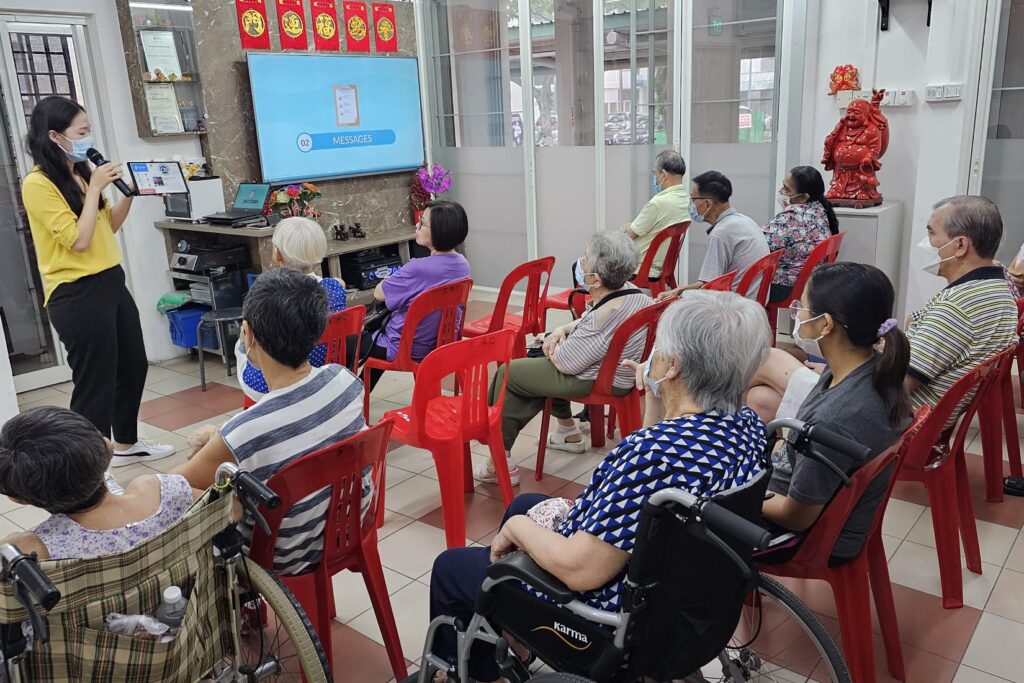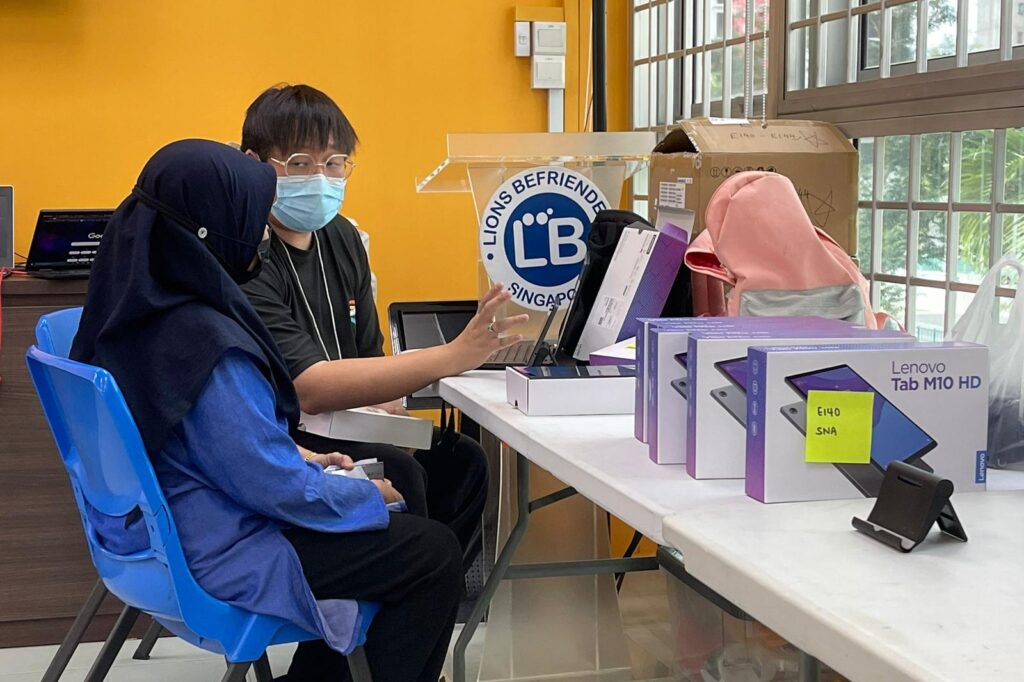2024 HAPI Second Prize Winner
THE PROBLEM
According to a Duke–National University of Singapore study conducted in 2016/2017, 34 percent of older Singaporeans and permanent residents perceive themselves to be lonely, and this percentage will likely increase with an aging society. Similarly, the Department of Statistics, Singapore, estimates that 83,000 elderly persons will be living alone by 2030, which is a steep rise from 47,000 in 2016. This is a significant concern as loneliness can lead to various health issues, both physical and mental. Moreover, isolation can have dire consequences. For example, there has been an increasing number of older people who pass away behind closed doors unnoticed, only to be found days later. Channel News Asia reported that there were 37 older people who died alone undiscovered in 2023 in Singapore. In fact, there were 3 cases of lonely deaths in just one week in April of that year, raising alarms about the welfare and safety of those older people who are mostly cut off from society. The numbers will undoubtedly rise if social isolation and loneliness remains unaddressed. The social and emotional wellbeing of the elderly is crucial for their personal health and for the public health.
THE INNOVATION
The Lions Befrienders Service Association (Singapore), or LBSA, was established in 1995 and is a voluntary welfare organization dedicated to providing holistic care and support to help seniors age healthily in place with community participation, enabling them to enjoy purposeful and meaningful lives.
In 2022, they began developing the IM-OK ecosystem. The idea was to empower older individuals to self-monitor and report their wellbeing to designated family members as well as to LBSA, which has volunteers known as “befrienders” who make regular home visits to seniors, offering them companionship and monitoring their wellbeing.
The IM-OK system uses an elderly-friendly tablet that allows people to check in each day. With large fonts, recognizable icons, and intuitive operations, IM-OK is designed to reduce the digital obstacles that might otherwise impede adoption of the technology by older adults. During development, common barriers were carefully considered to design a user interface that prioritizes simplicity, consistency, and accessibility. Focus group discussions with key stakeholders were held to gather insights into their user experiences. Large colorful icons as well as sharp and thick fonts are used for easy navigation, and the developers worked to eliminate the need for typing as much as possible. In addition, the app is available in Singapore’s four national languages (English, Mandarin, Malay, and Tamil) to cater to the different races and language preferences. Finally, the IM-OK app is also “locked in place” on the tablet so that users will not be able to accidentally close it or navigate to other background apps.
Unlike traditional monitoring devices, the IM-OK system was designed to have the seniors make a conscious effort in the program. This approach ensures that the seniors are aware of the program and that its success involves their close participation. In other words, they are not a passive beneficiary.
One of the central features is a large blue “I am OK” button, located prominently, which allows the user to self-report their wellbeing at their preferred timing. If they fail to report, designated family members and the LBSA are notified via text messages so that they can check in on the person and help can be rendered as soon as possible if needed. This can greatly reduce the incidences of delayed help or of older people passing away unnoticed. Moreover, loved ones can be involved in their care process via a companion “Next-of-Kin” app, building greater family involvement and care for older people.
Video calls, messages, and reminder functions are also available on the app to facilitate alternative modes of communication between the user, their family, and LBSA. Loved ones and LBSA can send personal medication reminders or greetings to alleviate any sense of loneliness and isolation.
The app also incorporates various entertainment, learning, and health-related functions, which help to alleviate the daily monotony. Users can view old photos and listen to old music for reminiscence therapy or play cognitively stimulating games. By weaving technology into their everyday life, older people can learn to adopt digital means to stay socially connected while being physically and cognitively active.
The health monitoring module empowers users to stay informed about their health status by displaying their blood pressure and body composition automatically. The customized learning module allows the users to pick up basic digital literacy skills.
LBSA was able to draw on its network of 10 Active Ageing Centres to offer training sessions and enroll participants. Volunteers were also recruited to provide lessons on how to use the tablet in the user’s home. The learning process was gamified to make it more fun and engaging. And the contents of the app are continuously updated based on user feedback.
The app has already been credited with getting emergency care to older users who missed their IM-OK check-ins. And it has provided peace of mind to both the users and their loved ones to know that they are not alone.
KEYS TO SUCCESS
It was important for IM-OK to incorporate older people into the process of developing the app to ensure it is intuitive and easy to navigate, and they continue to track user feedback to constantly improve the user experience.
The tablet was set up so that the user will remain on the IM-OK interface, but the app is customizable in a number of ways. For example, the user can set their preferred time for pressing the “I am OK” button, ensuring that it fits into their lifestyles, and they can also customize entertainment options.
By creating an ecosystem that involves the user’s next-of-kin as well as a volunteer befriender, it makes the care of the elderly a whole of community effort with the family at the center.
FINANCIAL STRUCTURE
The IM-OK project was initially funded by the Digital for Life Fund offered by the government’s Infocomm Media Development Authority (IMDA). The total initial operating costs of the innovation were SGD332,120 (approx. US$240,000), with the bulk of that being funneled into the procurement of hardware devices and development of the software application.
The IM-OK program is provided to older LBSA members at no cost other than having to bear the expenses of electricity and internet. (Although they also secured SIM cards with data services for older people who do not have home broadband.) The participants enrolled in the program were given the tablet device loaded with the IM-OK app. However, the IM-OK device remains the property of LBSA, so if members withdraw from the program, they return the device, allowing it to be redistributed to other vulnerable older people.
LINKS





